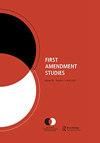重新聚焦于触发警告的辩论:课堂上的特权、创伤和残疾
Q2 Social Sciences
引用次数: 12
摘要
触发警告的使用一直是学术界和大众媒体的热门话题。不幸的是,到目前为止,关注的焦点一直是学生是否需要“坚强起来”。触发警告之所以受到强烈反对,很大程度上是因为学者和评论员都把课堂环境中的创伤和不适混为一谈,认为这是一回事。在这篇文章中,我认为触发警告应该主要被视为一种确保残疾人进入课堂的手段。为了做到这一点,我认为像创伤和不适这样的术语不能再被视为同义词,以便理解触发警告的方式,提醒学生利用他们的应对策略。不能认识到触发警告的必要性,很大程度上是因为一些教师没有认识到自己的特权。通过我自己的亲身经历,我试图在现有的对话中找到支持触发警告的清晰度,并将讨论的焦点重新集中在平等的受教育机会上。本文章由计算机程序翻译,如有差异,请以英文原文为准。
Re-focusing the debate on trigger warnings: Privilege, trauma, and disability in the classroom
Abstract The use of trigger warnings has been a hot topic both in academic circles and the popular press. Unfortunately, the focus has thus far been on whether or not students need to “toughen up.” The backlash trigger warnings receive is largely due to the fact that scholars and commentators alike have conflated trauma and discomfort in the classroom environment to mean the same thing. In this essay, I argue that trigger warnings should be seen primarily as a means of ensuring disability access in the classroom. In order to do so, I contend that terms such as trauma and discomfort can no longer be treated as synonyms in order to understand the ways in which trigger warnings alert students to utilize their coping strategies. The inability to recognize the necessity of trigger warnings stems largely from some instructors’ failure to identify their own privileges. Writing from and through my own embodied experiences, I seek to find clarity in existing conversations in support of trigger warnings and refocus the discussion toward equal access to an education.
求助全文
通过发布文献求助,成功后即可免费获取论文全文。
去求助
来源期刊

First Amendment Studies
Social Sciences-Law
自引率
0.00%
发文量
0
期刊介绍:
First Amendment Studies publishes original scholarship on all aspects of free speech and embraces the full range of critical, historical, empirical, and descriptive methodologies. First Amendment Studies welcomes scholarship addressing areas including but not limited to: • doctrinal analysis of international and national free speech law and legislation • rhetorical analysis of cases and judicial rhetoric • theoretical and cultural issues related to free speech • the role of free speech in a wide variety of contexts (e.g., organizations, popular culture, traditional and new media).
 求助内容:
求助内容: 应助结果提醒方式:
应助结果提醒方式:


